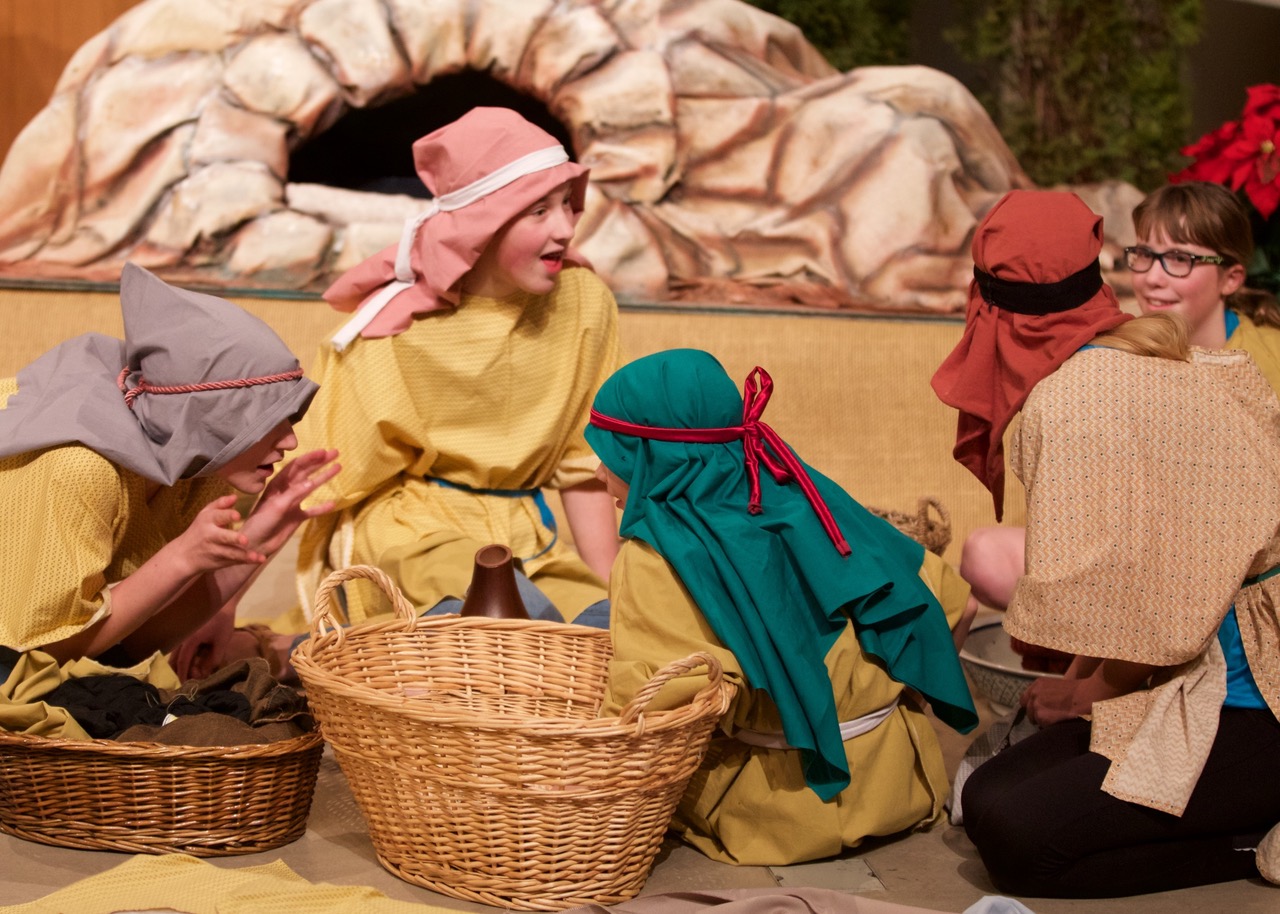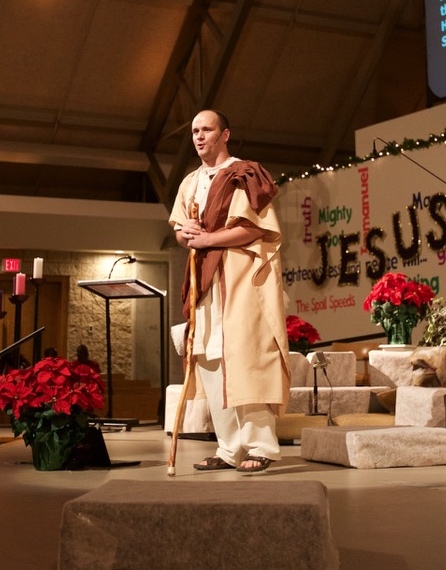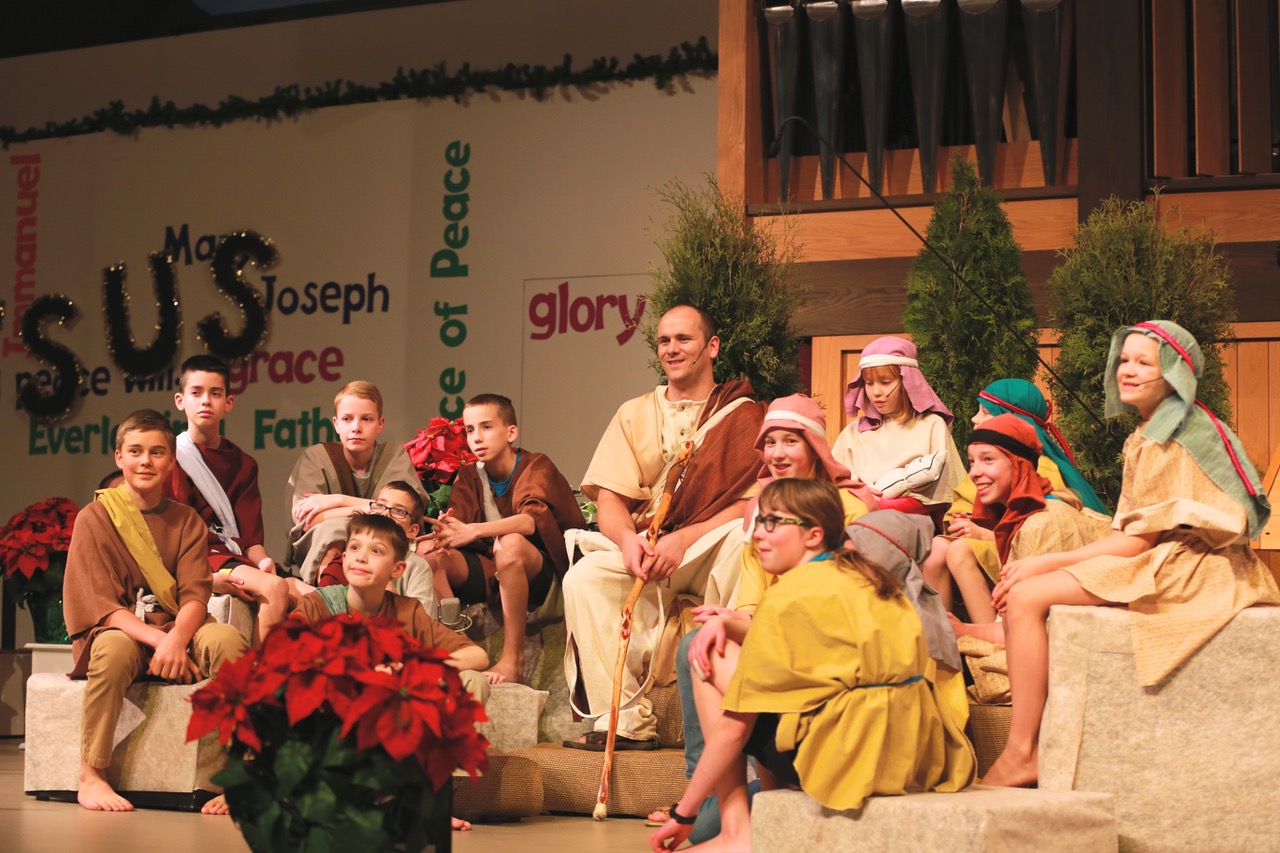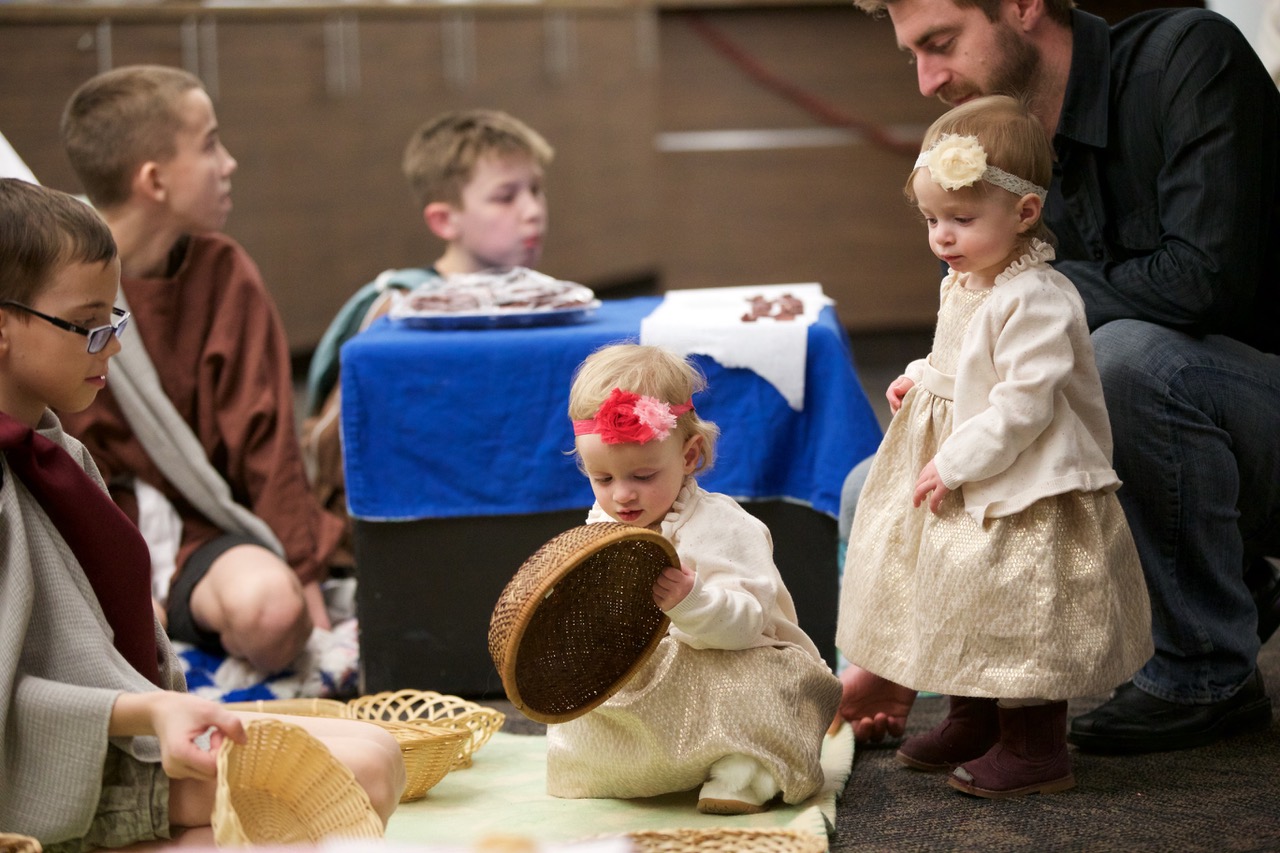“Can we please do something different for Christmas Eve this year?”
“Can we try something that will speak to those on the fringes of our community?”
If you plan worship, questions like this might be vying for attention in your own church. While services with traditional structures and themes may appeal to some, others, depending on their age and background, could find such an approach difficult to relate to.
At West End Christian Reformed Church in Edmonton, Alberta, patterns of church attendance change at Christmastime. Attendees at the Christmas Eve service tend to be families with visiting adult children and grandchildren, guests from the community, and some congregation members. Christmas Day worship seems to attract mostly members of the congregation.
The challenge, then, was to design an evening service to hold the attention of children, open the gospel message to the unchurched, and maintain the expectations of those who want “tradition.” It was within this challenge that we set the goal of presenting an original dramatic presentation based on Luke’s account of Christ’s birth.
Note: The full downloadable script is available in the resource section below.
Overview of the SERVICE
Anchoring the Message (Luke 1:1–4)
Luke’s personal message to Theophilus at the beginning of his gospel lays out two issues. First, there had been many stories and rumors circulating around the life of Jesus that called into question what was true and what was false—something everyone in our own society is familiar with. Second, Luke promises an orderly account to reaffirm for Theophilus what he has been taught as a Christian. We imagine that Luke’s approach to this task is to travel to check with eyewitnesses who can confirm or disprove the stories that have been handed down about the birth and life of Jesus Christ.

A person traveling around Palestine then would need access to water. For most places in Israel, much of community life happened around a well. Children would be drawing water, washing clothes, and meeting friends. In this drama, some children’s curiosity about a stranger brings them together with a thirsty Luke at the village well. In a society with an oral tradition, children would have heard the adults sharing news about the itinerant preacher Jesus Christ and forming opinions about him. Was he the Messiah? Luke, using his own writings and those of Matthew, a fellow apostle, speaks the truth about Jesus.
Sharing the Truth
Scene 1: A Savior is promised to a young woman (Luke 1:26–38)

Daniella, the youngest of those coming to the well, has just received a doll from her mother. Released from her chores to play, she comes to the well to share her new gift with her friends. Unfortunately, a game of monkey-in-the-middle among boys from the market results in Daniella’s doll falling into the well. Luke comes to the rescue, pulling the doll out of the water and using a piece of his cloak to dry it. As Luke comforts Daniella, the other children join Luke to find out who he is and why he is in their village. Luke then shares about how God promised the impossible that a Savior would be born.
Scene 2: A royal birth, but in a stable (Luke 2:1–20)
Luke continues by telling the children about Christ's birth and how the shepherds and angels were involved.
Scene 3: A Messiah for all (Matthew 2:1–12)
Luke uses the words of Matthew to tell how not only was the good news meant for lowly shepherds but all people including the "Wise Men" who were not Jews.
Scene 4: Christ at the Well with Living Water (John 4:5-14)
To bring Luke’s discussion with the children to a close, and to draw attention back to the well, the story of Jesus and the Samaritan woman as recorded later by John is told.

We All Are Waiting for the Savior
From an empty stage, Luke turns to speak directly to Theophilus (and to the congregation), using Acts 1:6–11 to describe the promises the angels gave to the apostles after Christ’s ascension about his return. If those in Israel had been waiting for the Savior to come, so we today are also waiting for Christ to return. That is the truth about Christmas.
Closing in Candlelight
A tradition in our Christmas Eve worship is lighting candles and singing “Silent Night! Holy Night” Mohr, LUYH 85, GtG 122, PsH 344. (Designated people bring candles forward, light them from the Christ candle, then bring them to the ends of the first row of congregants. Those sitting at the ends light their own candles from the lit ones, passing the light in a similar fashion to the person beside them. This is repeated for each row till all candles are lit.)
Order of Worship
Prelude: “Come, Thou Long-Expected Jesus” Wesley, LUYH 56, GtG 82/83, PsH 329
Daniella and the Girls at the Well: “Imagine” Getty, LUYH 72
Welcome
Prayer
Song: “O Come, All Ye Faithful” Wade, LUYH 76, GtG 133, PsH 340
Introduction: Luke 1:1–4
Scene 1: A Savior is Promised to a Young Woman (Luke 1:26-38)
Song: “Hark, the Glad Sound! The Savior Comes” Doddridge, LUYH 60, PsH 335
Scene 2: A Royal Birth, but in a Stable (Luke 2:1-20)
Songs
“Away in a Manger” (Instrumental) North American, LUYH 86/86, GtG 114/115, PsH 348/349
“Hark! The Herald Angels Sing” Wesley, LUYH 80, GtG 119, PsH 345
Scene 3: A Messiah for All (Matthew 2:1-12)
Song: “Joy to the World” Watts, LUYH 92, GtG 134/266, PsH 337
Scene 4: Christ at the Well with Living Water (John 4:5-14)
Choir: “Come to the Water” Foley, arr. Hasseler
Scene 5: Daniella’s Blessing (Ephesians 6:24)
We Are Still Waiting for the Messiah (Acts 1:1-11)
Prayer of Thanksgiving
Invitation to Return for Christmas Day
Blessing: 2 Corinthians 13:14
Candle Lighting
Song: “Silent Night! Holy Night” Mohr, LUYH 85, GtG 122, PsH 344

Organizing the Service
Casting: A request for volunteers was put in the bulletins in November. Roles were assigned after we knew how many children wanted to be involved. The children were asked to choose their own Hebrew stage names from an online list.
Scheduling: With many children involved in school and community events before Christmas, we decided to limit rehearsals to the three Sunday afternoons in December and three evening dress rehearsals in the sanctuary the week of Christmas Eve.
Costumes: Costumes for the children were available from a previous Christmas play. Luke’s costume was created by a church member using materials bought at the local thrift store (tablecloth and curtains).
The Well: We built the well based on a photograph of an artesian well in Palestine. A large, black tray fit inside the well to allow children to draw water. The well was placed on the stage area.
Cost: Food samples for 600 were donated. The cost of materials for the well and for Luke’s costume was about four hundred Canadian dollars.
Technology: Telling a story to children is different from writing a letter to an adult. As a way of keeping both perspectives, all of Luke’s narratives were prerecorded and played back over the sound system at the appropriate times. That allowed the onstage conversation between Luke and the children to be mimed. The lighting and the audience’s focus moved from the platform to the screens to follow the recorded narrative.

The Market: The church foyer was set up as the village market. As members and guests entered the church, they were met by Luke and the market children.
In addition to two display stalls (pottery and woven baskets), visitors could sample pastries at the bakery stall, smoked meat (elk) at the butcher’s stall, and water from the well. Not only did this generate interest about what would happen in the service, the children involved were able to relax and enjoy the experience of being in character.

